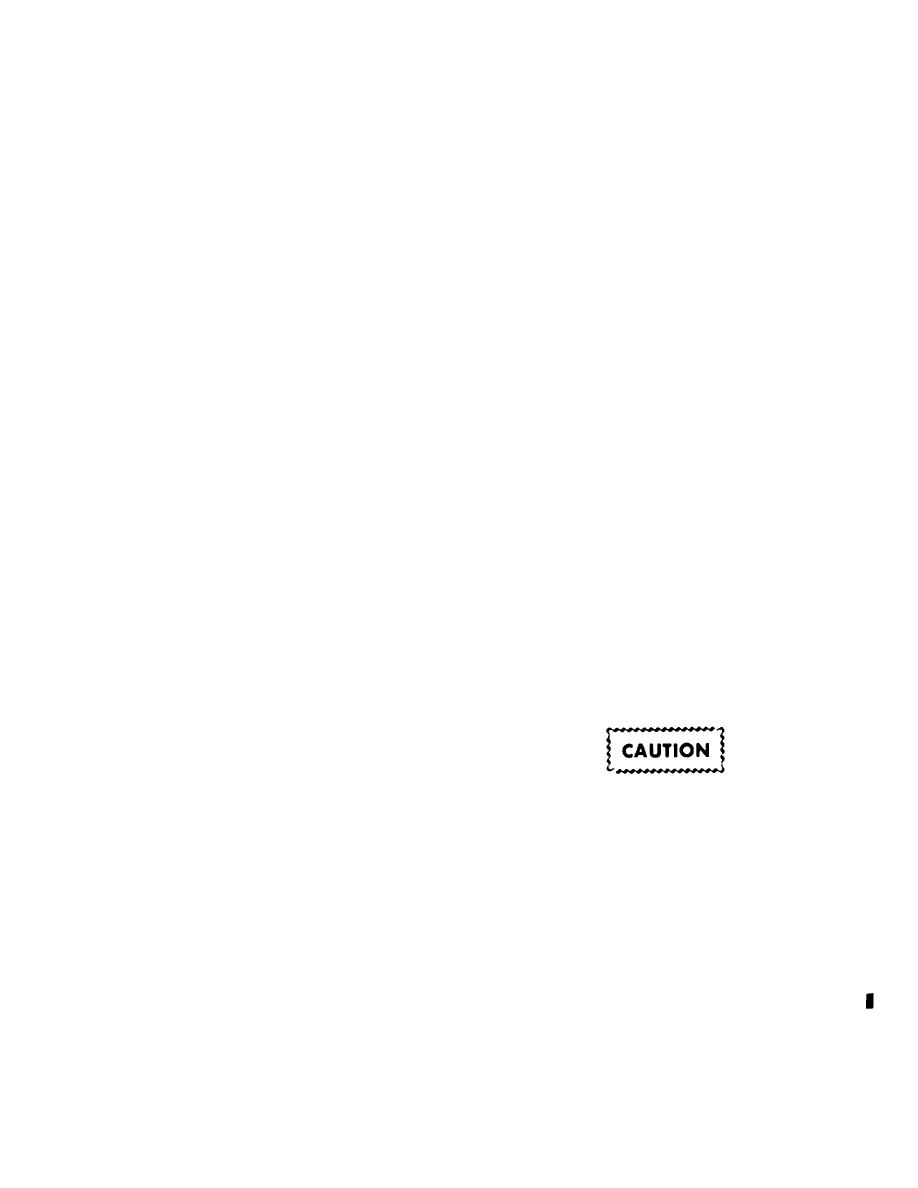
TM55-1500-345-23
(5) Propeller spinner or propeller control.
(6) Cockpit enclosures, including avi-
(6) Mask over joints,
access doors, or
onics panels, instruments, etc.
other openings or panels which
have been bonded
(7) Engine air intakes, tail pipe area. Bat-
with adhesives, Paint remover
has a detrimen-
tery and fuel vents and heater exhaust must be
tal effect on the strength of
adhesives when
covered to keep out paint remover.
allowed to contact them.
(8) Do not strip sealant presently applied
under access covers. Any sealant removed will be
(7) Masking may be done with barrier
replaced using adhesion sealant
paper, Military Specification MIL-B-131F or MIL-
MIL-S-81733 Type II, Class B or low adhesion
B-121, Type 1, Grade A, Class 1; tape, pressure
MIL-S-8784 molded in the form of a rubber
sensitive adhesive, for masking during paint strip-
gasket.
ping, Military Specification MIL-T-23397, Type II
(9) Fiberglass wingtips and other
(72 hour protection).
fiberglass components, e.g., antennas and
radomes.
(8) Masking may also be done with
The OV-1 Fuselage. The OV-1 fuselage is
paraffin wax, Federal Specification VV-W-95, in
b.
sealed at the fuselage skin joints; therefore, rapid
lieu of
paper
Use
only
masking
tape,
paint stripping and thorough flushing is
MIL-T-21595, to outline area to be masked to
necessary.
keep wax off metal, Melt wax and brush a
thick coat on surface, The temperature of the
Radomes will not be stripped.
Radomes.
wax should be approximately 150F (65C),
2-5. PROTECTION OF SURFACES NOT
as higher temperature may deform plastic.
TO BE STRIPPED.
General.
a.
Masking of Seams. Masking of seams
b.
(1) Mask all transparent plastic surfaces
can be done with MIL-S-8784, Class B, sealant.
such as windows, canopies, blisters, etc. Plastic
Allow to cure to a firm rubbery state (approximate-
will be crazed, frost or lose transparency if paint
ly 20 hours at 60F to 80F) prior to starting the
remover comes in contact with them. Mask
stripping operation. The required cure time for
radomes in the same manner as plastics to pre-
this material must be considered when flow or
vent damage to their rain-erosion resistant and
processing time is of prime importance. After the
antistatic coatings. Also, mask boots or any ex-
paint stripping operation is completed, the fillet
posed rubber or elastomer surfaces since
formed by the MIL-S-8784, class B, material shall
remover will accelerate deterioration of these
be peeled off by hand.
materials. Double masking of sensitive areas is
recommended.
(2) Mask detailed decalcomania which
cannot be easily replaced. Other instructions,
All masking or protective materials
stencils or warning signs will either be masked or
must be removed immediately upon
replaced after repainting.
completion of paint stripping and/or
(3) Do not attempt to r e m o v e c o a t i n g
painting process.
from loop antennas. Protect the housing from
contact with remover,
GENERAL
PREPARATIONS.
(4) Mask all faying surfaces, seams, ac-
NOTE
cess doors, pitot static ports (area within a one (1)
The only chemical paint remover authorized
ch diameter), or other openings with barrier
for use on aircraft surfaces is MIL-R-81294.
aper and tape.
Other chemical removers cannot be used
(5) A l l e d g e s , r e p a i r s a n d l o o s e f a s -
unless authorized by AMSAV-MEA.
teners on all honeycomb panels shall be masked
prior to chemical stripping,


